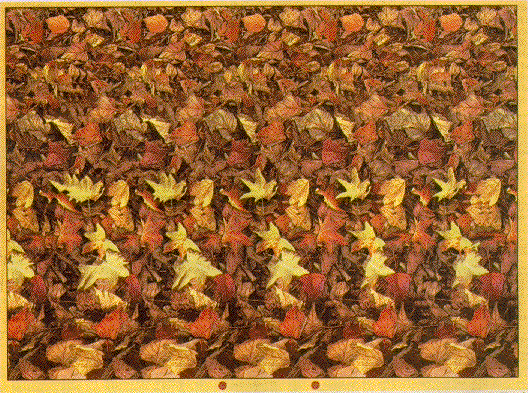When I was a boy I remember when a special kiosk was set up in our local mall. Surrounding it were people, heads tilted, eyes crossed, looking at strange patterned posters. These images they were staring at were called “magic eye” or autostereograms. These strange pictures appear to be a colourful pattern but when you stand a few feet back in a new position, and view the image out of stereo focus, an illusion changes the whole experience. With a bit of practice a kind of 3d image emerges. In a moment of clarity each person smiles and shouts out that they can see it, “look! I see a shark!” and “I see a hot air balloon!”
Seeing the world around us and all that is happening there often takes a certain kind of patient perspective, some skill that we did not know we needed, and a maybe can only happen when we stand in a new spot. We know it takes the discipline of attentive silence to allow a friend to talk and tell their story. As a dad, seeing the world through my kids’ eyes sometimes requires that I get on the floor and play with them, at their level. I need to be present, active, and aware in new ways if I’m to have fun or connect with those I care for.
C.S. Lewis says that there may be something more needed if we’re to see the world in a new way, he wrote, “For what you see and hear depends a good deal on where you are standing; it also depends on what sort of person you are.” Where we stand matters, it changes what we see. If we look down on someone, or past them, we surely won’t experience a connection with them. But Lewis also says that the “sort of person” we are matters, too. Our character plays a role in what we see, and the way we have nurtured our lives will shape our experience of the world around us.
Our neighbourhoods are places where we live out of the character that has been formed in us. If we seek to know our neighbours, reach out with care, celebrate each other, and look out for those friends who live along our street, then it may be a sign that our character has been growing. Our interest and even our affection for those around us is often an early indicator of the kind of character we have created. This, in turn, changes the way we see and hear their stories.
Learning to see our neighbours, community, and city in a new way takes a certain patience and attentiveness to others. We may need to take time, like we do with those strange 3D art illusions, to tilt our heads, squint, and patiently reposition ourselves until things become clear.
Learning to see our neighbours might require that we stand in a new place, and a new position. My friends at “Hospitality Matters” suggest that we can “choose to position ourselves well to love our neighbors.” We can turn in such a way towards our community to see grace, forgiveness, hope, faithfulness, and a caring world that we are invited into. Standing in a new place can even change us. Soon enough we too will be shouting, “hey! look! I see something wonderful over here. I see you!” It might be that in seeing others, they will begin to see you, too.
Standing Over Here

In response to Canada's Online News Act and Meta (Facebook and Instagram) removing access to Canada's local news from their platforms, Anchor Media Inc encourages you to get your news directly from your trusted source by bookmarking this site and downloading the Rogue Radio App. Send your news tips, story ideas, pictures, and videos to info@anchormedia.ca.






